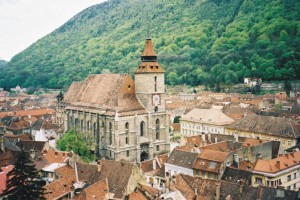Economy
Romanian economy is being characterized by stability of prices, financial stability and currency exchange rate stability reported to European currency.
International investments position has improved, falling to the deficit below 50% of Gross Domestic Product (GDP) in March 2016 (in comparison, in March 2015 the level was approx. –55% of GDP).
Romanian economy has increased in 2016, mainly because of internal demand being boosted by expansionist fiscal-budgetary politics. In 2016 GDP increase was 4,9% in Romania (in comparison with the value of 3,9% in 2015). It is expected that Romanian economy will increase by 4,4% in 2017 and by 3,7% in 2018.
Investments have come to the same grow rates as they were before the crises. Increase in investments has reached a record high level of 8,3% in 2015. In 2016 the total value of investments (measured as gross formation of fixed capital) has increased by 5,5% because of reduced income rates and a stable level of investors’ trust. But public investments have fallen in 2016. The main reason is slow rhythm of engagement of new projects through EU funds financing for the period 2014 – 2020.
Romania has one of the highest rates of investments in the European Union. In 2015 total investments represented 24,8% of GDP, much over EU middle level of 19,7%.
Inflations has fallen to –3,0% in May 2016. Romanian National Bank estimates that inflation rate will overpass 2% at the end of 2017, rising till 3,4% at the end of 2018.
Unemployment has fallen from 6,8% in 2015 to 6% in 2016 and is approaching the levels before crises. Employment places in agriculture and industry have disappeared, but there were created new employment places in services that prove changes in economy structure.
Budget’s deficit will increase to approx. 3,6% of GDP in 2017, and to 3,9% of GDP in 2018, as a result of continuous fiscal relaxation and announced reduction of taxes. At the same time, the level of Romania’s public debt will increase from 38% of GDP in 2015 to 40,5% in 2017 and 42,3% in 2018.
Consume is still expected to be the main generator of economic growth, followed by investments. Because of high internal demand, it is expected supplementary rise of imports that will lead to the growth of commercial deficit from –6,2% in 2016 to –7,3% in 2017 and 7,7% in 2018. At the same time, exports are expected to grow, although at lowest rates that imports, the main factor being that of European economic space growth, which is the main destination of Romanian exports.
(Source: The Chamber of Commerce and Industry of Romania: (http://ccir.ro/en/), Study on state of economic environment: http://ccir.ro/wp-content/uploads/2014/11/starea-mediului-economic-2016.pdf, Business perceptions on the economy http://ccir.ro/wp-content/uploads/2017/05/ENG_KTNS_Raport_Cercetare_CCIR-2017.pdf)
Romanian – Latvian Economic Cooperation
In 2016 total commercial goods exchange was of 32,41m EUR, which is 26% less than in 2015.
Exports from Latvia to Romania: 16,2m EUR, which is 39,3% or 10,59m EUR less than in 2015.
Imports from Romania to Latvia: 16,11m EUR, which is 5% or 0,8 thousands EUR less than in 2015.
Main Latvian export goods to Romania: wood and its products (16,22); chemical industry and related fields (15,96%); machines and mechanisms; electric installations (13,99%).
Main Latvian import goods from Romania: food industry (41,90%); machines and mechanisms; electric installations (29, 53%); chemical industry and its related fields (9,84%).
(Source: Ministry of Foreign Affairs of the Republic of Latvia: http://www.mfa.gov.lv/arpolitika/divpusejas-attiecibas/latvijas-un-rumanijas-attiecibas)
Romanian – Latvian Bilateral Chamber of Commerce: http://en.ccrl.ro/

